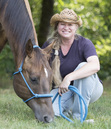Elena Hartwell's Blog, page 64
February 5, 2020
Five Reasons Why We Write
Choosing only five reasons why we write merely scratches the surface of what compels us to put pen to paper, but I believe some of these reasons speak directly to the human condition. Here are five reasons why I believe I am compelled to write. I’d love to know what compels you.
Why We Write #1
1. We want people to hear us

We arrive in the world hoping to connect
Communication comes hardwired into the human experience. Children arrive in the world focused on the expressions and noises made by the adults around them.
Regardless of the country of birth or the language a child hears spoken by caretakers, learning to communicate is an active process that requires interaction.
How Young Children Learn Language
We write, I believe, because we want people to hear our story.
We spend our lives communicating with people all around us, but spoken language remains faulty and the experience of human engagement can be fleeting.
By writing our stories down, we hone them and perfect the words we choose. This allows us to tell our stories exactly the way we want.
Why We Write #2
2. We want people to understand us

We want to be understood
If people read our material, they can understand us in a more permanent way. It’s not just memoirists who seek to be understood through writing.
Seeking to be understood.
Our fictional characters can represent our world view, and while our experiences may be vastly different than our characters (I’ve never arrested anyone for murder), how they think about the big picture is often in line with ours.
Writers also create the characters that are vastly different from ourselves through our own personal lenses.
If you want to understand me, read my fiction.
Why We Write #3
3. We want to be known

We want to be known
It’s one thing to have people “understand” you – in a single-issue kind of way. It’s another thing to provide people a well-rounded picture of you as an individual.
For example, it’s one thing to know I love animals, it’s another to know that I love animals and I love to travel and I have taught university courses for more than twenty years.
We are each the sum of a vast number of experiences, and the more you “know” someone, the more complex they become.
Writers typically produce a lot of different stories. These different stories may have similar themes or characters or locations, but they each provide a broader and more complex picture of us. Each time we finish a piece, we’re adding to the total picture of who we are.
Though can we ever really know another person? How well do we even know ourselves?
10 Things You Don’t Know About Yourself
Sometimes by writing, we can gain insights into our own psyche.
Why We Write #4
4. We want to share our experiences

Everything is better with a friend
Life is more meaningful when we share events with others, regardless of how mundane those events are. This is both positive and negative, in that the mood of the group can have a tremendous impact on our own emotional state.
But part of the joy of sharing our experiences through writing is we can control our side of the story. And we can share our experiences with a wider group.
It’s part of why talking about our writing can be intensely satisfying. We can share our experience through sharing our experience of writing.
The Important of Sharing Experiences
We are all in this together.
Why We Write #5
5. We want to sign books
This may sound tongue-in-cheek, but I’m totally serious here. Writing a book is a huge accomplishment. It’s one a lot of people would like to check off their bucket list, so finishing a manuscript is huge, and something we’d like acknowledgment for.
Getting published is an even bigger accomplishment. So signing books is a symbol of our success. It’s a public acknowledgement that we succeeded at something very challenging.
It’s also our way to interact with readers, thank them for buying our books and supporting our work, and having the face-to-face experience of engaging with the people who have read our stories in the past and will read our stories in the future.
Writing is cathartic and engaging, creative and fun. It’s also a social contract we make between us and our readers, that we will treat our work with honesty and integrity. We will be vulnerable and open in our work if readers will meet us on the page, open and vulnerable to the emotional and intellectual experience we bring to them.
We want to engage on a deeper level with our readers. Trust me and I’ll trust you.
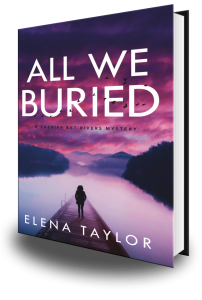
Launching April 7
Wondering when you can see me at an event? I’d love to have you join me when I’m doing a talk, panel, or signing in your town! Click the link here for my Event Calendar.
We write because we love it – for so many reasons. I’d love to hear yours!
And – what makes us love to read?
Comment below to share your experiences.
Baby photo by regina_zulauf on Pixabay. Click the link here for more information.
Woman with hands on face by geralt on Pixabay. Click the link here for more information.
Girlfriends by cherylholt on Pixabay. Click the link here for more information.
Sharing a carrot with a horse by heathervalentin0 on Pixabay. Click the link here for more information.
Header photo by Free-Photos on Pixabay. Click the link here for more information.
The post Five Reasons Why We Write appeared first on Elena Taylor.
January 29, 2020
Writing is Like Visiting the Zoo: 5 Reasons Why
Five Thoughts on Writing and Rewriting
How can visiting a zoo have anything in common with writing, you ask?
While on a recent visit to the San Antonio Zoo, I realized that it had a lot in common with writing. Let me explain
One: Writing is like visiting the zoo because everyone has a favorite animal.

Snowflake Eel
Just like people enjoy specific animals, everyone has a favorite genre (or two or twelve).
Personally, I’ve never found an animal at the zoo I don’t love, but I definitely have my favorites. Lions and tigers and bears are kind of like the bestsellers of the animal world.
They bring people into the zoo like the latest John Grisham gets people into the Barnes and Noble.
But then there are the lesser-known animals, like this snowflake eel. It’s like a book people didn’t even know they would love until they happened to find it on the shelf between the new Lee Child and something by Amy Tan.
” . . . people didn’t even know they would love it until they happened to find it on the shelf between the new Lee Child and something by Amy Tan.”
Two: Writing is like visiting the zoo because it feels sprawling at first glance.
A huge plot of land with so many things to see, it feels insurmountable to do in a day. But on closer reflection, it has great organization.
Animals are grouped by species or country of origin. Walkways move visitors from place to place, missing nothing.
Just like the rewriting process, the visitor finds their way through the park, nothing extraneous, everything leading from the entrance to the exit, like the throughline of a plot.
“. . . the visitor finds their way through the park, nothing extraneous, everything leading from the entrance to the exit, like the throughline of a plot.”
Three: Writing is like visiting the zoo because my favorite moments are often the quiet ones.

Seahorse
As exciting as it is to have the Bengal tiger appear, sometimes it’s being alone in a quiet aquarium watching a tiny seahorse that is truly magical.
Standing in front of the glass, nature gives the reader a gift, just like when simple lines resonate with us the most.
“. . . nature gives the reader a gift, just like when those simple lines sometimes resonate with us the most.”
Four: Writing is like visiting the zoo because sometimes the location makes itself known.
 Just as writers are impacted by their geography, the San Antonio Zoo is currently overrun with Black Vultures. The big carrion eaters perch on, if not inside, various exhibits.
Just as writers are impacted by their geography, the San Antonio Zoo is currently overrun with Black Vultures. The big carrion eaters perch on, if not inside, various exhibits.
Writers enchant readers by taking them to various locations they would otherwise know nothing about, just as the clouds of black vultures fascinated me.
“Writers enchant readers by taking them to various locations they would otherwise know nothing about. “
Five: I love a good book. I love a good zoo.
Can my writing get better? My prose more lyrical? My plots more dynamic? My characters more diverse? Of course it can.
Can zoos do a better job? Create more realistic and larger enclosures? Provide better care? Of course they can.
But just as my writing is a work in progress, so are our zoos.
I always hope each book I write is stronger than the one that came before it. The San Antonio Zoo isn’t perfect, but they have made changes, and continue to make changes, to improve the quality of life for their animals.
We don’t live in a perfect world, where every animal is allowed to live in their pristine, natural habitat any more than editors catch every single typo every single time.
Writers make mistakes, but that shouldn’t take away from our enjoyment of reading a good story.
Zoos make mistakes, but that shouldn’t take away from our opportunity to learn about the natural world or from the good work they are doing to help fight the extinction of the world’s wildlife.
Read a good book. Visit a zoo. Support writers and wildlife.
We’re all in this together.
Find my upcoming novel, All We Buried, on presale at Amazon!
Read the Publishers Weekly review by clicking the link here.
The post Writing is Like Visiting the Zoo: 5 Reasons Why appeared first on Elena Taylor.
January 25, 2020
One Hitwoman, One Debut Novel, and a Ghost
The International Thriller Writers’ Debut Author Program runs from July to July, so if a writer’s debut novel comes out after the dates of ThrillerFest, they become a debut for the following year. That sometimes means an author is a debut when they have a second book coming out. I’m thrilled to introduce you to debut author C.S. O’Cinneide and both her debut and her second novel, coming out March 10 and available for presale.
Wondering what you’ve already missed on my blog this year? Check out my other posts by clicking the link here.
The Author

C.S. O’Cinneide
C.S. O’Cinneide (oh-ki-nay-da) is a writer and a blogger on her website, She Kills Lit, where she features women authors of thriller and noir.
Her debut novel, Petra’s Ghost was a semi-finalist in the Goodreads Choice Award for Horror in 2019.
Her second novel, The Starr Sting Scale, is a witty noir, and first in a crime series featuring semi-reformed hitwoman, Candace Starr.
O’Cinneide lives in Guelph, Ontario, Canada with her husband, an Irish ex-pat who remains her constant muse.
To learn more about C.S., click on her name or photo or follow her on: Twitter, Facebook, and Instagram
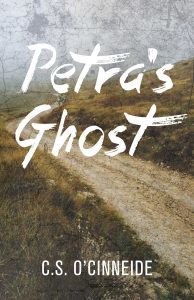 The Books
The BooksPetra’s Ghost
A woman has vanished from the Camino de Santiago, the ancient five-hundred-mile pilgrimage that crosses Northern Spain. Daniel, an Irish expat, walks the lonely trail, carrying his wife Petra’s ashes, along with the damning secret of how she really died.
To buy the book: IndieBound and Amazon
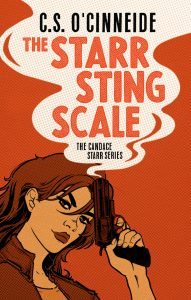 The Starr Sting Scale
The Starr Sting Scale
Candace Starr considers herself retired from the world of professional hits since she got out of prison.
That’s until a society maven wants her daughter’s boyfriend removed from their lives permanently.
When he shows up dead, Candace has to help the cops catch the killer, even though it just might be her.
Available for presale: IndieBound and Amazon
The Interview
Tell us about your experiences publishing your first book and how it differed with the second:
Petra’s Ghost got a great deal of attention from very early on. Seven months before its release in July 2019, it began showing up on “Most Anticipated” lists.
Last fall it was a semi-finalist for a Goodreads Choice Award. In all these cases it was categorized as horror, even though the book was promoted as literary.
That was a real shock.

Camino de Santiago
But since the main character gets stalked on the Camino de Santiago pilgrimage by a woman who is slowly decomposing, perhaps I should have expected it.
” … a tongue- in-cheek noir, about a six-foot-three hitwoman named Candace Starr.”
The Starr Sting Scale, while getting some great reviews from major outlets like Publishers Weekly has been quieter in the lead-up to its release for February 2020.
It’s a very different book, a tongue- in-cheek noir, about a six-foot-three hitwoman named Candace Starr. I still laugh out loud when I read it. It is definitely not literary, but it is crime fiction, where the market can be very competitive. Not that all markets aren’t competitive!
Love strong female characters? Read about a Modern-Day Ninja and her debut novel.
What inspired you to write these novels?
When I came back home from walking the Camino de Santiago in 2015, I wanted to write a book about the experience.
Unfortunately, you couldn’t swing a cat in a bookstore without hitting a Camino memoir. But what about a thriller? And so, the idea for Petra’s Ghost was born.
Sadly, a woman did vanish from the Camino trail when I was walking it. Her real-life story did not end well. But she was on my mind as I hiked those five-hundred miles. So, it is no surprise that a woman’s disappearance, along with the stunning landscape of Northern Spain, set the backdrop for my novel.
The inspiration for The Starr Sting Scale is a funnier story. Much like the book. I had sent my first book (Petra’s Ghost) to one agent, who had read it and replied “Characters are phenomenal. Writing is strong. But it’s not commercial enough.”
I paraphrase.
It sounds silly, but I was so angry. I sat down at my computer and said, “I’ll show you $&**! commercial!” I ended up writing The Starr Sting Scale in a month.
It’s dark but filled with satire. It grew out of a short story I wrote where a mother tries to hire a hitwoman (Candace Starr) to rub out her teenage daughter’s no-good barnacle of a boyfriend. I have three daughters. I don’t think I need to outline to you the inspiration there.
What are you working on now?
Once again, I’m split between two books!
I am working very hard on the final draft of a novel with the working title, EVE’S RIB. It is more literary in nature, like Petra’s Ghost, but also with a smattering of magical realism. I think it is my best writing yet.
But I am also working on the next book in the Candace Starr crime series. This one will feature Candace’s blood relations in the mafia, and team her up with an agnostic Sikh who has some very useful computer skills. It comes out in February 2021.
You have an amazing writing history! I love the idea of a hitwoman.
Congratulations on all your success!
Camino de Santiago photo by Ulma93 on Pixabay. Click the link here for more information.
Header photo by sw_reg_03 on Pixabay. Click the link here for more information.
The post One Hitwoman, One Debut Novel, and a Ghost appeared first on Elena Taylor.
January 22, 2020
Five Thoughts on Writing and Rewriting
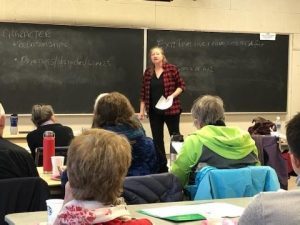
Sharing my thoughts on writing
I have a lot of thoughts on writing. But that doesn’t mean I’m always conscious of my own process. Sometimes the best thing I can do to get motivated with my own writing is to teach other people writing techniques.
EPIC Group Writers in Edmonds, Washington, recently hosted one of my workshops on the rewriting process.
It was a blast.
The participants were smart and engaged, with terrific questions and showed a total immersion for all four hours of the workshop.
I love the rewriting process: I love to do it, talk about it, and think about it.
But I’ve been a bit slow to get the first draft of my next novel done, which means . . . no rewriting for Elena!
Getting the group energized about rewriting, I was reminded how much the concepts for rewriting were applicable to finishing a first draft (physician heal thyself!)
Here are a couple of the thoughts on (re)writing I focused on for the workshop.
There’s no such thing as a perfect book.
“Story” and “plot” are two different things.
Characters have one fundamental external and one fundamental internal goal.
Every single character has objectives, obstacles, and stakes.
The point of the first draft is just to get the “story” down on the page, the “plot” can be honed later.
Let’s take a closer look at my thoughts on writing.
Thought One on Writing
There’s no such thing as a perfect book.
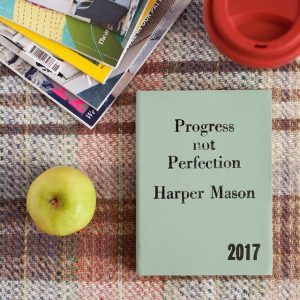
Thoughts on Writing
The idea of perfection gets in the way for a lot of writers. There’s this sense that if something isn’t “perfect” the writer can’t move forward.
That a rewrite can’t be finished unless everything is “perfect.” I’m happy to say that I don’t fall into that trap . . . MOST of the time.
Here’s why I say it’s a trap.
“Perfect” is subjective. What’s perfect to one person isn’t to another, so it’s not something that can be attained.
Secondly, and more importantly in this instance, nothing is ever perfect with a first attempt.
The idea that a draft will be “perfect” isn’t useful. What’s far more useful is “what can I fix?” or, if the draft is still in progress, “what am I missing?”
While I don’t try to be perfect, I can get caught up with the thought, “this scene isn’t going to be a good scene, so I shouldn’t write it.”
Then it’s time to remind myself, it doesn’t matter if a scene isn’t a good scene, or whether or not it will end up in the final draft, I just need to get the bulk of the “story” on the page so I can start to shape it.
Thought Two on Writing
Story and plot are two different things
Story is everything involved in making up the novel. The backstory or background about the characters, all the events that take place off the page, where the characters might be headed after the novel is over. EVERYTHING.
The plot is made up of only the specific events that are actually on the page.
It’s useful to remember that I’m just sorting out the story with a first draft. It doesn’t matter what’s extraneous, or missing, just get it all out there.
Thought Three on Writing
Characters have one fundamental external and one fundamental internal goal.
This is a really useful tool for me. It allows me to understand what’s driving each character through the story.
For a murder mystery, the external goal for the protagonist can be pretty obvious, solve the murder and catch the killer, but the internal goal can be tricky to identify. It dawned on me I know the external goal in my latest work, but not the internal goal.
If I knew that, I could see the internal motivations, how they interact with the external motivations, and have a better understanding of how my character will act and react.
This gives me a clear goal: Discover my protagonist’s internal goal for THIS STORY. Not every story, just the one in this book.
Thought Four on Writing
Every single character has objectives, obstacles, and stakes
Similar to the previous point about goals, but on a smaller scale. For every scene, each character has an objective, something is in the way, and there’s a cost to not achieving that goal (and potentially a cost at achieving it as well).
I’m reminded that every place I’ve stopped moving forward in the draft, if I go back and look at what my characters are after, and see what’s in the way, I have a sense of what they will do in that moment to achieve their goals. Then, once they get them, what they will do next to achieve the larger external/internal goal that drives the entire story.
By locating the places where the story stops (I write scenes out of order) I can identify what the character is going to do next and write forward.
Thought Five on Writing
The point of the first draft is just to get the “story” down, the “plot” can come later.
This point is so important, I’m going to reiterate it here. I have to work through the first draft before I can get to the fun part of rewriting. So if my external goal is to finish the next novel and my internal goal is to write a better book than I wrote last time, I have to achieve the short-term goal of writing a first draft.
There aren’t any real obstacles in my way, it’s just putting my butt in the seat and my fingers on the keyboard.

One Step at a Time
I can do that. We can all do that. One step at a time to reach any goal we’ve set for ourselves.
I’ve got some time carved out next week to reinvigorate my writing process. Check back in and I’ll let you know how it’s going.
Looking for more motivations to keep writing? Read my blog post on motivations for writing in winter by clicking the link here.
Remember – we’re all in this together. I’d love to know what YOU’RE working on and how you stay motivated!
Workshop photo by Mindy Halleck: Click the link here to learn more about her.
Progress not Perfection photo by StockSnap on Pixabay. Click the link here for more information.
Goal image by Tumisu on Pixabay. Click the link here for more information.
Footstep image by Free-Photos on Pixabay. Click the link here for more information.
The post Five Thoughts on Writing and Rewriting appeared first on Elena Taylor.
January 19, 2020
From NaNoWriMo Participant to Bestselling Debut Author
Debut author Vanessa Lillie’s NaNoWriMo project became her first published novel. But was it her first attempt? Read further to find out about her publishing journey.
Want to learn more about the querying process to help you on your publishing journey? Read one of my posts about querying by clicking on the link here.
The Author

Vanessa Lillie
Vanessa Lillie is an Amazon bestselling author of the thriller debut, Little Voices. She’s originally from Miami, Oklahoma, where she spent a lot of time investigating local ghost stories at the public library.
After college, she worked in Washington, DC, until moving to Providence, Rhode Island, which she calls home with her husband and dinosaur-aficionado son.
Smitten with the smallest state, she enjoys organizing book events and literary happenings around town.
To learn more about Vanessa, click on her name, photo, or any of the following links: Instagram, Facebook, Twitter
The Book
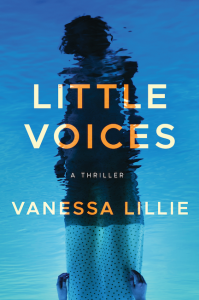
Debut Novel
Little Voices
On the night Devon almost dies giving birth, her friend is murdered.
Back home from the hospital, Devon is struggling with postpartum, and hearing a cruel voice in her head.
But she as returns to her skills as an attorney to investigate, justice becomes an obsession, one that leads Devon, baby in-hand, down a dangerous path directly to the killer.
To buy the book click on either link: Amazon and IndieBound
The ebook version is on sale for just $1.99 through the end of January!!
The Interview
Describe your publishing journey:
This was definitely not my first manuscript or first project I queried to find an agent. I worked on two books over ten years, one I queried extensively, getting about 150 passes from agents. I took a little time off to have my son, and then this story arrived.
“I wrote it as a National Novel Writing Month project and edited it over a year.”
I wrote it as a National Novel Writing Month project and edited it over a year. Pretty quickly after that, I found my amazing agent, Victoria Sanders, from her slush pile and Victoria connected me to a wonderful home for my debut and next book at Thomas and Mercer at Amazon Publishing. When Little Voices debuted, I’d been trying to be published for fourteen years.
“Little Voices is a dark love letter to the smallest state.”
What inspired you to write this novel?
I really wanted to find a place to explore my feelings about motherhood within my favorite genre, a thriller.
I had complex and often contradictory emotions as an exhausted new mom. A thriller with a woman who is suffering postpartum, but still finds the courage to seek justice for her murdered friend was a plot I had a really longing to follow.
The other element that’s almost as prominent as new motherhood is Rhode Island, a place I’ve lived for eight years and absolutely fell in love with. Little Voices is a dark love letter to the smallest state.
What are you working on now?
My next thriller, For the Best, is about a nonprofit CEO whose wallet is found next to a murdered man.
She’s the only suspect and her life falls apart, so she starts a vlog to clear her name.
The deeper she digs, the more dirt she uncovers about the murder and herself. Unexpected truths pile up until she’s buried so deep even finding the killer might not be enough to set her free.
Both your books sound amazing – definitely putting these on my TBR list! It’s great to learn about a NaNoWriMo project that went the distance from draft to Amazon Bestselling novel.
Thanks for hanging out with us.
The post From NaNoWriMo Participant to Bestselling Debut Author appeared first on Elena Taylor.
January 15, 2020
Seven Motivations to Keep Writing in Winter
Motivations to keep writing during the winter in the Northern Hemisphere can be tricky. The cold, winter weather can drive us indoors, leading to hibernation and binge watching our latest Netflix obsession. (Currently mine is Unforgotten on Masterpiece)
That can be a good way to regenerate, and there’s nothing wrong with taking a break from the hectic rest of the year and recover from the holidays.
But, if you’re like me, one day of rest can turn into a month if I don’t have some ideas to motivate my writing.
Seven Motivations to keep writing and exercise the “writing” muscles.
Motivation through reading outside your genre
We tend to write in the genre we read. That’s a good thing. It means we understand our genre, know writers who write what we write, and we can identify the trends and expectations of readers for our kind of work. I can’t express enough how important it is to read in one’s genre. We feel motivation to keep writing when we read a book we wish we had written ourselves.
But . . . Writers do not live by genre alone.
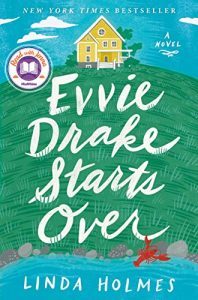
Fun Read
Reading outside our genre can be equally important. There are at least two big advantages to this, reading non-fiction to aid in the authenticity of our own work and to discover authors and stories we might not otherwise engage with.
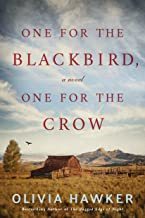
Click the cover to read a review
As many of you know, I read crime fiction. But I also love to read historical fiction, literary fiction, and commercial fiction. Sometimes I read horror, sci-fi, and the occasional romance (I enjoyed Evie Drake Starts Over).
I’m currently reading One for the Blackbird, One for the Crow, which is both historical and beautifully written. (Click on the cover to read a review).
Reading outside my genre inspires me in ways reading crime fiction sometimes can’t do.
Then, obviously, reading for information to incorporate into our fiction is always useful.
I love to read about crime scene investigation techniques.
Motivation through reading outside your age range
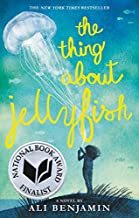
For any age reader!
While I primarily read adult fiction and write adult fiction, there’s nothing better than a good YA novel. A lot of us have read books “written” for kids and young adults, such as the Harry Potter series or The Hunger Games.
But YA isn’t the only age range adults can enjoy.
One of the best books I read in 2019 was The Thing About Jellyfish by Ali Benjamin. Though technically a middle grade novel, it’s filled with exquisite prose, complex characters, and the poignant coming-of-age experience of learning about loss and forgiveness.
I highly recommend this book to readers of any genre or age range. I found myself motivated to keep writing because of the way this book took my breath away.
Motivation through reading a book on craft
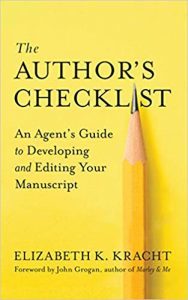
Read about craft!
Winter can be a time of resolutions or goals. Getting better at our craft is a terrific goal for any writer at any stage in their career. Whether it’s learning a new technique or revisiting something we haven’t considered in a while, reading books on craft is always a good idea to help motivate our writing.
The book I’m most excited about on craft coming out in February is The Author’s Checklist: An Agent’s Guide to Developing and Editing Your Manuscript by Elizabeth Kracht.
Because I work with writers one-on-one as a developmental editor, along with querying and the publishing process, I’m thrilled to get inside a successful agent’s head about how she experiences the writing process. I anticipate learning new things and confirming much of my own observations about the development and editing process. Both are tremendously useful!
I also expect to have a lot of “ah ha” moments about writing that I can apply to my current work-in-progress.
Motivation through writing a blog post that coincides with your storytelling
Writers learning the business side of the profession are often told to have a platform. Those of us with books coming out in 2020 need to find ways to garner attention alongside the other 999,999 books coming out. One way to do that is to write guest blog posts on a topic related to our work.
That doesn’t just mean a post about a character or an interview about our writing process. One of my favorite guest blog posts I did to help launch Three Strikes, You’re Dead, was a foodie tour of Washington State for TripFiction.
My private eye, Eddie Shoes, lives in Bellingham and vacationed in Leavenworth, both smaller towns in Washington State, so I wrote about real places that exist in my state that Eddie visits. Click the link here to read the post.
Lots of blogs are looking for guest writers, it’s a great way to get your name out in front of potential readers. Haven’t published a novel yet? Don’t worry, you can still write a fun blog post to help you build up your social media platform even before you publish your first novel.
Motivation through writing a blog post about your writing process
We’re all in this together. Whatever struggles you have, other writers have too. Whatever hardships, rejections, bad first drafts you have endured, we’ve all been there.
Don’t be afraid to write about the hard aspects of being a writer. Don’t be shy about showing your weaknesses or vulnerabilities. No one is going to think . . . “they did that?” A lot of us will be thinking “I did that too.” Or, even better, “Wow, good to know, I can avoid that pothole.”
By writing about your writing process, you can continue to develop a relationship with the writing community and readers. Think of it as a conversation with friends.
Motivation through setting goals for your writing year
I wrote about this in my January Newsletter. I think having short and long term, very specific goals is very good for our writing. It gives us concrete steps to take toward finishing projects and can make a big project feel more manageable, by breaking it down into smaller steps.
Not signed up for my newsletters? Shoot me an email at elenataylorauthor@gmail.com and I’ll be happy to sign you up. You can also find a signup at the bottom of this post.
Motivations through exercising at home
Not everything that supports your writing is time at the computer. Sometimes it’s what you do away from the computer.
Exercise does as much for our writing as anything else. It helps keep us healthy and flexible. It can also relieve or prevent depression. Exercise can also free the mind up to work on a plot point or character problem subconsciously while the focus is on what the body is doing.
For indoor exercise, I like to do yoga or get on the treadmill.
You don’t have to have experience or equipment – just get online and find a class to join in or read a book with basic yoga poses. Obviously you will want to check with a physician if you have serious or chronic health conditions before starting any exercise routine, but even 10 minutes of stretching can do wonders during a writing marathon.
For those of you in milder climates or who love to romp around in the snow, there are lots of outdoor exercise possibilities as well. There’s always shoveling the snow off the front walk as an alternative!
I’d love to know how YOU stay motivated during the winter months! Drop me a note or leave a comment below.
Still looking for motivations? Don’t miss the guest post by Kristin Owens here on my blog! Click the link here to read more.
Header photo by Cock-Robin on Pixabay. Click the link here for more information.
The post Seven Motivations to Keep Writing in Winter appeared first on Elena Taylor.
October 1, 2019
Short Fiction Writer Turned Author
I’m thrilled to introduce you all to short fiction writer and debut author Tara Laskowski!
(Love those short story writers? Don’t miss my interview with debut author & short story writer Eric J. Guignard. To read the post, click the link here.)
The Author

Tara Laskowski
TARA LASKOWSKI is the award-winning author of two short story collections, Modern Manners for Your Inner Demons and Bystanders, which was named a Best Book of 2017 by The Guardian.
Her debut novel One Night Gone will be published in October 2019 by Graydon House Books.
She is the editor of the online flash fiction journal SmokeLong Quarterly, an Agatha Award winner, and a member of Sisters in Crime. A graduate of Susquehanna University and George Mason University, Tara grew up in Pennsylvania and lives in Virginia.
To learn more about Tara, click her photo, name, or any of the following links: Facebook, Twitter,
The Book
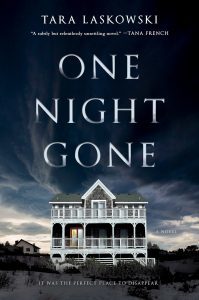
Allison Simpson is offered the opportunity to house-sit in Opal Beach, a wealthy beach town, during the off-season, which seems like the perfect chance to regroup and start fresh after a messy divorce.
But when she becomes drawn into the story of a teenage girl who disappeared from town thirty years before, she begins to realize that Opal Beach isn’t as idyllic as it seems.
To Buy the Book, click on the link here for multiple locations/formats.
“I’ve always been more of a short fiction writer.”
The Interview
Describe your publishing journey:
I’ve always been more of a short fiction writer. I am the editor of the flash fiction journal SmokeLong Quarterly, and I have published two collections of short stories. I never actually thought I’d be able to write a novel that anyone would want to read, to be honest! But I also like a challenge (it’s the competitive Scorpio inside of me).
It took me six years to write my first novel, which, after shopping around to agents, I realized that there were several problems I wasn’t sure how to fix. It was too big of a book for me to tackle at that point in my career. I shelved it and wrote another novel that also never got any traction.
Then my ‘aha’ moment really came when an agent friend asked me what I like to read (you can read more about that career-changing moment by clicking the link here), and I realized that what I should be writing is domestic suspense, since that’s what I LOVE.
After that, things went pretty quickly. I wrote the draft in a little over a year, found my wonderful agent Michelle Richter a few months after that, and she was able to find me the perfect editor and publisher for this book. I feel grateful every day!
“I realized that what I should be writing is domestic suspense …”
What inspired you to write this novel?
I was born on Halloween, and creepy is my thing. So I knew I wanted to write something that would spook people, but not in the traditional run-down haunted house in the middle of the woods kind of way.
My husband’s parents have a beach house in North Carolina, and we all went there for Thanksgiving one year. It was so lovely and also a bit eerie to be in a beach town during the off season, and that’s really what sparked the idea for this book.
“… creepy is my thing.”
I also really like houses, and the energy of houses, and I wanted to have a spooky house that doesn’t really appear, from the outside, to be spooky at all.
A lavish beach house felt like the right match there–a lavish beach house in the off season of a tourist town. Nothing spookier than the sound of wintery ocean wind beating against the windows in a deserted town, right?

Storm on a deserted beach . . .
What are you working on now?
I’m currently working on a proposal for a second book, another standalone suspense novel. I’m superstitious about saying too much about it right now, but it’s looking like I’ll be exploring the creepy side of suburbia this time–moms and their competitive natures. Please keep all your fingers and toes crossed that all goes well!
Fingers and toes crossed! So excited for you on this new writing journey – from short fiction to novels is a big leap! I’m looking forward to finding out how it all goes!
Header Photo by ArtTower on Pixabay. Click the link here for more information.
Deserted beach photo by ARTsbyXD on Pixabay. Click the link here for more information.
The post Short Fiction Writer Turned Author appeared first on Elena Hartwell.
September 24, 2019
An Agent Requests Your Manuscript . . .
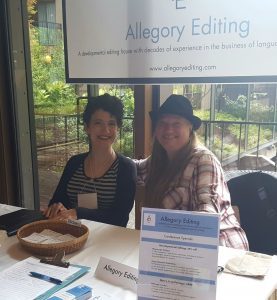
Let us help you find an agent!
An Agent Requests Your Manuscript, Now What?
Conferences can be a great way to find an agent.
I recently attended the Pacific Northwest Writers Association Conference in Seattle, Washington, as a senior editor with Allegory Editing, along with the founder, Andrea Karin Nelson.
It’s a lively conference with terrific speakers, excellent panel topics, and the opportunity to pitch work to agents and editors.
One of the best ways to land an agent is to meet them in person, interest them in both you as a person and as a writer. Rather than sending a cold query that sits in a slush pile, it guarantees your work will be read.
But is it the best thing for an author?
“Well . . .” she said, taking a sip of her coffee and settling in for a chat. “It depends.”
Agents want to see your most polished work.
There are complications for a writer using a verbal pitch compared to an agent seeing a sample of the writing. Here are a couple places a writer can get into trouble.
No command of basic grammar and style.
An unclear understanding of genre and why it matters.
Pitching a first draft, but telling the agent it’s polished. (Or, thinking it’s polished when it’s not . . .)
Dear Agent, it has been twenty years since my freshman English class . . .
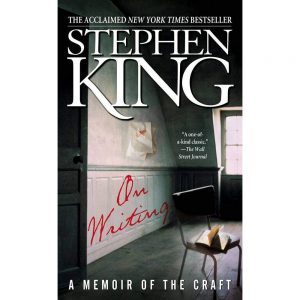
Most of us read all the time. But if the majority of your reading and writing lately has been on Twitter and memos with co-workers, you may need a refresher on basic grammar.
Yes, spell/grammar check and Grammarly can help (I’m not recommending Grammarly here, I’m just acknowledging it), that’s not the same as working on the basics of your craft.
For a great book on grammar, take a look at The Elements of Style by Strunk & White.
For a great book on why you should take a look at The Elements of Style, read On Writing by Stephen King.
You may have the most interesting, creative idea for narrative non-fiction or a novel, but if your writing lacks basic grammar, it won’t matter. A person could have a great idea for a cake recipe, but if they don’t know how to turn on a stove . . .
Dear Agent . . . Genre, Shmenre
A question I often ask writers interested in working with me as a developmental editor and writing coach is “what’s your genre?”
Usually followed up with, “what’s your subgenre?”
The reason I ask this question is two-fold. First, I like to know how familiar I am with the genre the writer is working in. But the second reason is I like to have a sense of how much the writer understands about this part of the industry.
Genre matters. The difference between Romance and Western might seem obvious on the surface, but what about a love story set in the 1850s? Should the writer pitch to Harlequin? Or Dusty Saddle Publishing?

Photo by Bhakti Iyata on Pixabay
Yes, during a verbal pitch, this has probably been explored with the agent, but if the writer is unclear about the genre their work fits into and misrepresents it to the agent, the agent may not realize it until they read the submission.
Secondly, before a writer pitches to an agent, if the writer is unsure of their genre, they may choose the wrong agent to pitch, missing out on an opportunity to pitch the agent who would be interested in their work.
Subgenre can be just as important. For example, the difference between a cozy and a thriller is huge and many agents don’t represent all the subgenres.
Dear Agent, My manuscript is complete at 85,000 words . . .
There’s a tremendous difference between a finished manuscript and a polished manuscript. For my novels, I rewrite somewhere in the neighborhood of fifty to one hundred times. You read that right. Fifty to one hundred times. That’s reading through the complete draft and making changes.
In the last round of edits with my publisher, I rewrote the complete manuscript three times in three weeks. In between those three rewrites, I printed it out and marked changes on a hard copy twice. So I went through the manuscript 5 times in 3 weeks. This is on a manuscript I have worked on extensively FOR YEARS before it found an agent and a publisher.
Writing is rewriting.
It’s an old saying, but a good one. Let me say that again, Writing is rewriting.
Do some authors have a stronger first (tenth, twentieth) draft than I do? Sure. But I’m not unusual in the writing world. There are plenty of authors out there who will talk about doing rewrite after rewrite. The international bestselling author Steve Berry talks about doing something like eighty rewrites on all of his books, and this is a man who has sold millions of copies and written nineteen novels, multiple e-book originals, and collections.
So if you just did a great pitch on your first draft, and an agent says “I’d love to see your work” – that’s terrific. It means you have a great story you are passionate about and know how to “sell.”
But it does not mean your work is ready to be read.
Do yourself a favor. Make sure you’ve done a lot of work on that draft before you send it in. Give it out to trusted beta readers. Preferably someone who reads in your genre and can be honest with you about what does and doesn’t work.
Ask a writer in your genre that you respect if they are willing to read the first chapter. A lot of us were helped out by people ahead of us and we like to pay it forward.
Take classes, read craft books, and read, read, read in your genre.
Still not sure? There are a lot of great developmental editors out there you can work with. I’m a huge fan of Erin Brown. I worked with her early on in my career and still use the information I gathered from her on my current work.
You can also work with Allegory Editing. Andrea Karin Nelson reads everything I write. I read everything she writes. Working with either of us, or any of our editors, can help you get your work to the level that earns not just “I’d like to read your work” but “I’d like to represent your work.”
An agent that’s interested in your concept will still be interested in a few months after you’ve polished up your material. Don’t lose out on the chance to turn the “send a few chapters” into “sign on the dotted line.”
If you’d like a free sample of Allegory Editing’s services on your current manuscript, click the link here.
We’re all in this together! Happy Writing.
Want to read more about pursuing a writing career? Read some of my other posts on writing by clicking the link here.
Header photo from Pexels on Pixabay, click the link here for more information.
The post An Agent Requests Your Manuscript . . . appeared first on Elena Hartwell.
September 8, 2019
Psychological Thriller Series Set in Santa Barbara
Psychological Thriller writer Catharine Riggs launches the second book in her Santa Barbara Suspense Series. So excited to have Catherine on my blog to chat about her writing and what comes next!
Lots of great authors with Thomas and Mercer! Want to find more? Read my post on debut author Dea Poirier and her novel Next Girl to Die by clicking the link here.
The Author

Catharine Riggs
Catharine Riggs lives and writes on California’s central coast. Before her dive into thrillers, Riggs worked as a business banker, adjunct college instructor, and a nonprofit executive.
What She Never Said is the second novel in her Santa Barbara Suspense series.
The first, What She Gave Away, was published by Thomas & Mercer in September of 2018.
To learn more about Catharine, click on her name or photo or any of the following links: Twitter, Instagram, Goodreads, Amazon, and Pinterest.
The Books
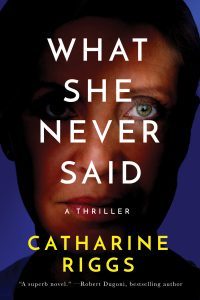
Book Two
People are dying at a luxury retirement community . . . and not from natural causes.
Ruth Mosby is the VP of operations at Serenity Acres, where the privileged elite go to die. For a hefty fee, wealthy retirees can live the good life in this posh Santa Barbara community—even after they outlive their money. Ruth thinks this is a fine arrangement, but the savvy new boss has a new rule: if you can’t pay, you can’t stay.
Ruth is deeply disturbed when destitute residents start dying at an alarming rate, as if on cue. Even more troubling, a macabre note accompanies each departed guest. Surviving guests whisper about an “Angel” who assists with suicides. Ruth has another word for it: murder.
Ruth enlists her neighbor, an ex-detective named Zach, to discover the Angel’s secret identity. However, the two have a painful history, and Ruth has dark secrets all her own. To solve the mystery, Ruth must descend from her golden tower—but can she bear the consequences of revealing her own sinister truths?
To buy the book, click on any of the following links: Amazon, Barnes & Noble, and IndieBound
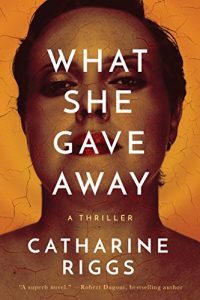
Book One
Revenge is anything but sweet in this twisty thriller about two women with very different lives locked in the same deadly game.
Imagining the best way to destroy a person’s happiness is Crystal Love’s favorite game. Devious and unpolished, the plus-sized loan analyst couldn’t be more out of place in her new town of Santa Barbara, where the beautifully manicured women never age and the ocean views stretch farther than the million-dollar lawns. And yet her eye for the power dynamics at play in this tony community is dead accurate.
Kathi Wright, on the other hand, has made it her life’s work to fit in with the plastic people who surround her. But when her husband—a wealthy bank president—dies suddenly, she’s left with nothing. Then the FBI shows up, asking questions she can’t answer and freezing assets she once took for granted.
While Kathi struggles to outrun the mess caused by her husband’s mysterious death, Crystal seems focused on her game. But why? And who are her targets?
Spanning two years and told in Crystal’s and Kathi’s alternating voices, this tautly plotted novel reveals the power of choice and the price of revenge.
To buy the book, click on any of the following links: Amazon, Barnes & Noble, and IndieBound
” . . . the psychological thriller explores the dark side of wealth and privilege . . .”
The Interview
Your Santa Barbara Suspense novels are linked by place, not character. How did you arrive at that choice for your books?
I hadn’t considered a series when I wrote my first published novel, What She Gave Away. Set in Santa Barbara, California, the psychological thriller explores the dark side of wealth and privilege and the toxic effects of denial. When I came to the end of the novel, I felt my protagonists’ arcs were complete but I wanted to continue to explore the subject.
So I constructed the second in the series, What She Never Said, to be loosely linked by location and secondary characters allowing me to further explore the overarching themes.

Santa Barbara Sunset
Your first book, What She Gave Away , is set in the banking world, where you have worked for many years. The second book, What She Never Said, is set in a posh retirement community. What prompted that setting?
The idea to set the second book in a retirement community came the year my mother-in-law passed away. She had been the primary caretaker for my father-in-law, who suffered from Alzheimer’s disease. After my mother-in-law’s passing, my husband took over her caretaker role and we spent a portion of most every day at my father-in-law’s retirement community where, thankfully, he received the best of care.
My thriller brain never at rest, I began to wonder what would happen if a supportive community such as his was purchased by a greedy, profit-driven corporation focused on enhancing the bottom line. How would they manage their destitute residents? Thus, my plot was born.
A Psychological Thriller emphasizes the delusional or unstable psychological states of the characters.
Tell us something about you that we won’t learn from your website bio.
I recently completed forty hours of training to receive my California Naturalist Certification. A program of the UC Division of Agriculture and Natural Resources, the California Naturalist Program promotes stewardship of our state’s diverse natural resources through education and service.
They use a science-based curriculum combined with hands-on learning to develop a citizen science approach to understanding our natural environment. One of my reasons for taking the course was to better incorporate the flora and fauna of the central coast into my everyday writing.
My naturalist “capstone” project was the first chapter of an adventure novel set in Big Sur, California.
(Incidentally, Big Sur is one of Elena’s all time favorite places!)

Big Sur, California
What do you love most about the area that you live in?
I currently live in the small town of Cambria, California, in a house perched above the sea. Each day I rise before dawn and work at a desk fronted by a large picture window where I can watch the sun rise over the ocean as I massage words onto the page.
Writing is hard, getting published is harder. Looking back, what helped you the most to become a Psychological Thriller writer with a 2-Book publishing deal with Thomas & Mercer? How did you learn your craft and stick out the rejections to get where you are now?
Stubbornness combined with a willingness to learn and a sprinkling of fairy dust led to the realization of my publishing dream. Like many authors, I toiled in obscurity for years working toward my goal. During that time, I wrote two “practice” thrillers now safely ensconced in a drawer.
My third novel opened the door to success. My craft had improved, my voices had sharpened. I submitted the first fifty pages to a workshop taught by bestselling author Robert Dugoni and long story short; he forwarded the completed manuscript to his agent. I subsequently secured representation with my dream agent, Rebecca Scherer of the Jane Rotrosen Agency.
But this is no easy success story. Although the novel received positive feedback, in the end it did not sell. I was discouraged but unwilling to pass on the opportunity presented by securing an agent. So I got back to work and in three months’ time wrote the first draft of a psychological suspense novel set in my hometown of Santa Barbara.
Within the year we sold What She Gave Away to Thomas & Mercer in a two-book deal with an option on the third. This month’s What She Never Said is the second book in the series.
The third is written but the option has yet to be exercised. Fingers crossed that happens, but if not? Did I mention I’m stubborn? It’s an important trait.
What are you working on now?
I’m at work on a near-future thriller about a young mother’s cross-country escape from an abusive relationship and her subsequent encounter with a deadly virus that could signal the end of the world.
“Don’t give up.”
Final Words of Wisdom:
Develop your craft. The only thing you control in this business is your writing, so produce the best work you can. Believe in yourself but be open to criticism. And be stubborn. Don’t give up.
Thank you for sharing your journey with us!
I love a good psychological thriller!
Can’t wait to see what happens with book three!
Header Photo: Geralt on Pixabay. Click on the link here for more information.
Santa Barbara Photo: SCOTTDCAMPBELL on Pixabay. Click the link here for more information.
Big Sur Photo: Click the link here for more information.
The post Psychological Thriller Series Set in Santa Barbara appeared first on Elena Hartwell.
September 1, 2019
Moments of Zen For a Busy World
I often post “Moments of Zen” on Facebook, using roughly thirty seconds of video about something I find peaceful or makes me happy. This action was in response to all the negativity on social media, a time out, so to speak, for myself, that I want to share with the world.
You can see an example by clicking the link here.
Moments of Zen

Grand Teton National Park
What I have found amazing is the positive response I’ve gotten from people about the posts. People often tell me how much they enjoy watching them.
That makes me happy. I love that I can do something small that makes another person’s day a little brighter.
One person asked how I find them. That question surprised me, because I don’t know how NOT to find them. This got me thinking about how we all see the world.
How to find your Moments of Zen
For me, there are Moments of Zen everywhere I look. I find them in what my animals are doing, in what’s happening in the natural world, in the weather, and sometimes even on busy city streets. For example, clouds over Manhattan, click the link here.

Street Art in Jackson, Wyoming
But that’s, in part, because I’m looking for them. I’ve done that my entire life. If I’m in a crowded city, I look for a tree. On a busy, noisy street, I find the quiet alleyway with the interesting brick wall.
If you’re in the midst of a stressful situation, take a moment to step away and find something, well . . . Zen. Find something beautiful, peaceful, or even funny. Those things are all around.
The Meaning of Zen
Since I’ve been using the expression for quite a while, I thought I should make sure I understood the word, so I recently looked up the meaning of Zen.
It comes from a Buddhist tradition and roughly translates as meditation, but is, of course, much more complicated. I don’t practice Buddhism, nor am I using the term as a teacher or expert in the field.
But it’s also a word that has come into our common vernacular, so that’s the Zen I’m using.
My favorite definition said it’s something a person does. It’s not a concept that can be described in words.
What I liked about that description is it describes how I’ve always felt when I find those little moments of beauty in the world around me. They aren’t something I can describe. They are something I do.
I see, hear, smell, touch, and taste the experience, whether it’s sipping the perfect cappuccino, playing with my horses, or sitting by the river in my backyard.
Writing can be Zen for me, when it’s going well. But the most Zen part of writing has always been when I’m working on the story in my head. I spin out the scenarios, engage with the characters, and imagine what happens next. It always ends up a little different by the time I put those ideas on the page, but that’s exciting too. To see what happens next.
Want to learn a little more about my writing process? Click the link here.
Regardless of the term you use or the way in which it manifests, I hope all of you have your own version of Moments of Zen. I hope you find a way to temporarily disengage from the barrage of challenging and difficult emotional states we see daily.
It’s important to be engaged in the world and know what’s happening around the globe, but it’s also important to know how much you can handle, and use techniques to step out of heightened emotions and appreciate what an amazing world we live in.
Want to see my Moments of Zen posts? Follow me on Facebook by clicking the link here.
I’ve also started a YouTube Channel, you can find that by clicking the link here.
For more photos of animals, art, and nature, you can follow me on Instagram.
I use my Moments of Zen to pull myself out of my busy life. To consider the larger picture and see moments of simple beauty. Time to take a breath and appreciate the incredible world we live in. I hope you enjoy taking those moments with me.
Thank you for visiting.
Header photo by Couleur on Pixabay. Click the link here for more information.
The post Moments of Zen For a Busy World appeared first on Elena Hartwell.

